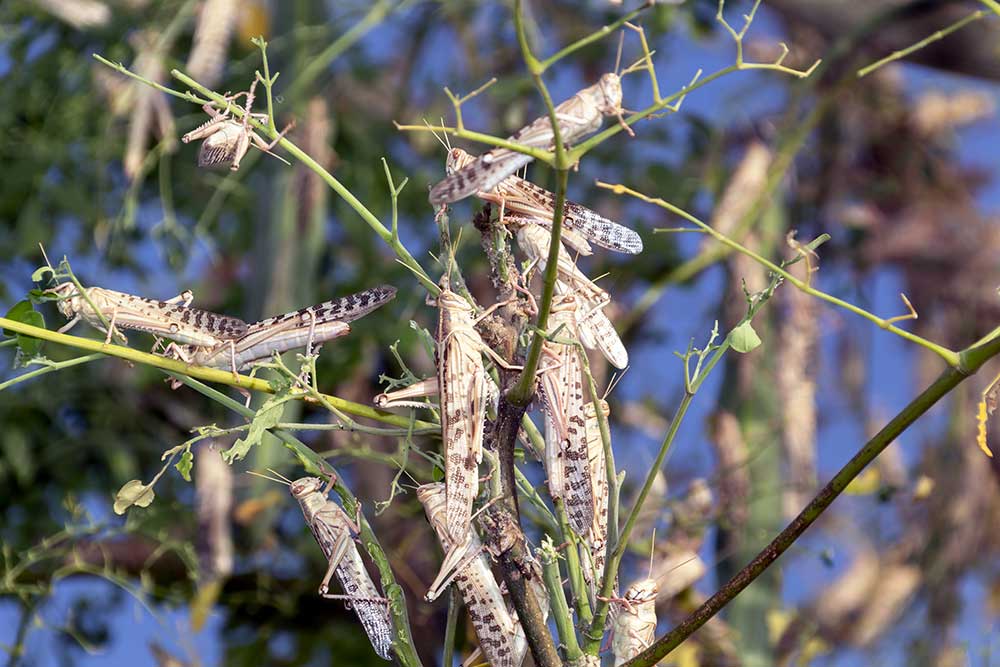
Pests and diseases cause significant losses of crops around the world and are a significant threat to food security. In China the migratory locust affects over 2 million hectares of agricultural land, while in Laos the yellow spined bamboo locust damaged over 5,000 hectares of crops in 2019. A new invasive pest, the fall army worm is becoming prevalent in Southeast Asia and China.
In this project we use Earth observation and meteorological data to provide information that helps farmers and agricultural authorities manage pest risk more sustainably. We use Earth observation imagery to prepare risk maps that identify habitats where locusts and fall army work are most likely to establish populations. Using satellite data on surface temperature we develop and run models that predict i) the growth of insect populations, and ii) the effectiveness of biological control methods. The models provide information to help preparedness and to guide the timing of application of biopesticides.
The project builds upon work already undertaken in North-East China and applies it in the Southern Chinese province of Hainan, and in Laos. We will provide risk base maps and information products that help chose the method and timing of interventions. We will work with agricultural management authorities in China and Laos, providing training in the use of the information.